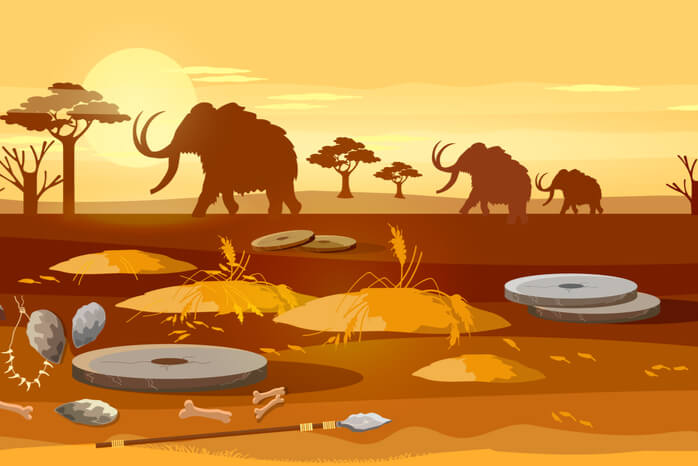How Neanderthals and Cro-Magnons Co-existed

Both Cro-Magnons and Neanderthals occupied the same ecological niche. This means that they used practically the same food sources and the same habitat. The two intelligent species waged a fierce struggle between themselves, at least in Europe. The Neanderthals eventually lost, but that doesn’t mean the war was easy and fast.
The paths of the Neanderthals and Cro-Magnons diverged 500-600 thousand years ago. They had a common ancestor, and for a long time they co-existed in the same habitat, but 35-40 thousand years ago the Cro-Magnon began to displace the Neanderthal, and the latter disappeared almost without a trace. By the way, the last surviving Neanderthals lived in the area of ??Gibraltar and even in the Crimea.
What were they like: Neanderthal and Cro-Magnon?
The constitution of the Cro-Magnons was less coarse and massive than that of the Neanderthals. They were tall (up to 180-190 cm) and had elongated body proportions. Their skull, in comparison with the skull of the Neanderthals, had a higher and rounder vault, a straight and smoother forehead, and a protruding chin. Cro-Magnon type was distinguished by a low but wide face, angular eye sockets, a narrow nose, and a large brain. In general, we are direct descendants of Cro-Magnons (anatomically we are practically indistinguishable from them). And the whole further history of mankind is the history of the Cro-Magnons and their descendants.
In contrast, Neanderthals were stocky, short (165 cm), and with a large head of an unusual shape. They had powerful brow ridges, a massive nose, and an expressionless chin. The physique of the Neanderthal people was much heavier and stockier than that of the Cro-Magnons: a wide chest, strong long arms, short thick legs, a large head on a thick neck. They weighed about 90 kilograms, and it was a real clot of muscles. By the way, the Neanderthal had a brain larger than the Cro-Magnon or modern man (1400-1600 cc vs. 1200-1300 cc), but a slightly different “configuration”: the frontal lobes were poorly developed.
What they ate, how and where they lived
The basis of the diet was meat, and a little bit of fish. It should be noted that along with the bones of buffalo and mammoths, the bones of the Cro-Magnons are found at the sites of the Neanderthals. Likewise, the bones of Neanderthals are also found at the Cro-Magnon sites. That somehow contradicts the idea of ??a peaceful existence side by side of two different intelligent species. By the way, the Neanderthal was a “native” European; its main habitat was Europe. And he lived there, starting from about 500,000 years BC. He was, so to speak, on top of the food chain. The main source of food was hunting for large and very large game.
Unlike the Cro-Magnon, the Neanderthal did not paint the walls of the caves and did not use decorations. Unlike the Cro-Magnon, who actively used a variety of throwing weapons, such as throwing spears, a bow, and arrows, atlatl, the Neanderthal did not master this technology, which had its consequences.
Far from peaceful coexistence
Cro-Magnon and Neanderthal were bound to collide. And this inevitably led to armed confrontation. Both species had a sufficiently developed brain to analyze the situation and look for ways to successfully fight the enemy. And since they were significantly different in appearance, they were automatically strangers to each other, which made a compromise unlikely. This very confrontation lasted many thousands, if not tens of thousands of years.
There could have been various reasons for the final victory of the slender Cro-Magnon man over the big Neanderthal man. The Cro-Magnons tamed the dogs, but the Neanderthals did not; Cro-Magnons led a more efficient economy, and big game was not their main dish – they also hunted small game, fish, fruits, and vegetables (when hunting small game – throwing weapons are absolutely necessary). There is also a version that Cro-Magnons were more communicative – i.e. could discuss among themselves a more complex way of joint action.
The outcome
This way or the other, but the Cro-Magnons won the war. They survived and passed on their genes to modern humans. However, for a long time, there was a common scientific belief that we humans carry many Neanderthal genes.
That was the case until some serious DNA research has been conducted. It turned out that we and Neanderthals are way too different. They are not the ancestors of the Cro-Magnons and, therefore, not our ancestors. A certain mixing did take place, and from 1 to 4 percent of Neanderthal genes are present in the genome of modern humans (this percentage varies in different nations), but we and they are not relatives.







